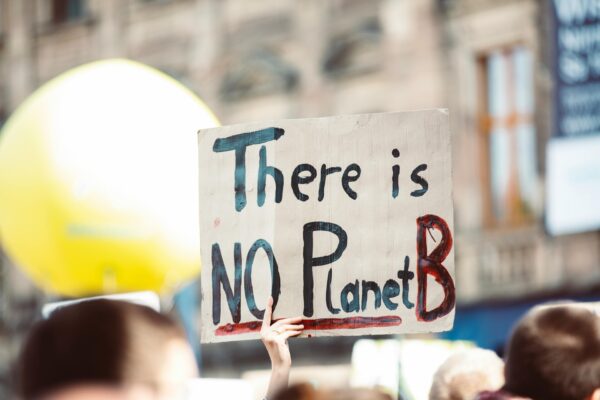The 2023 COP28 summit held in Dubai, checked several checkboxes in the global fight against climate change. It kicked off with the establishment of a groundbreaking Loss and Damage Fund, aimed at addressing the escalating losses and damages that vulnerable countries experience due to the worsening impacts of climate change. The conference concluded with a historic international agreement to ‘transition away from fossil fuels,’ the main driver of climate change, setting high expectations for further progress at COP29.
While these achievements are promising, critics argue that some crucial questions remain unresolved, particularly around how to accelerate efforts to keep global temperature rises within the 1.5°C limit.
Key Outcomes from COP28:
- Global Stocktake (GST): One of the central outcomes was the Global Stocktake (GST) which serves as a climate ‘check-up’ of where the world stands on climate action and support. The first GST, completed in 2023, revealed a stark reality: the world is not on track to limit global warming to 1.5°C, and urgent, accelerated efforts are required. The GST will take place every five years, and countries are required to update and communicate their Nationally Determined Contributions (NDCs) by 2025, with a final deadline set for 2035.
- Pushing Clean Energy Forward: COP28 saw 117 countries pledge to triple global renewable energy capacity by 2030, aiming for over 11,000 GW. Energy efficiency also garnered attention, with calls to double improvements within the next decade. The private sector also contributed, with Copenhagen Infrastructure Partners announcing a $3 billion fund to support renewable projects in developing markets.
- Creation of the Loss and Damage Fund: A major breakthrough at COP28 was the creation of a Loss and Damage Fund, aimed at supporting vulnerable countries already bearing the brunt of climate change. With a 26-member board, mostly from developing countries, the fund was established with initial contributions from the UAE ($100 million) and Germany ($100 million). By the end of the summit, the total pledges had risen to $770.6 million.
- Health at the Heart of Climate Action: The COP28 UAE Declaration on Climate and Health was launched, highlighting the importance of placing health at the core of climate action. Alongside this declaration, new financial commitments were announced for the same.
- Launch of the UAE Global Climate Resilience Framework: The UAE Framework for Global Climate Resilience (UAE FGCR) was introduced as a new initiative designed to support the Global Goal on Adaptation (GGA).
- Commitment to Sustainable Agriculture: At COP28, over 150 countries endorsed the UAE Declaration on Sustainable Agriculture, Resilient Food Systems, and Climate Action, signaling a unified effort to integrate agriculture and food security into their national climate strategies.
- Climate Finance Pledges: Several countries, including Belgium, Canada, France, Germany, Norway, Spain, Sweden, and the United Kingdom, collectively pledged $174.2 million towards the Least Developed Countries Fund (LDCF) and Special Climate Change Fund (SCCF), both managed by the Global Environment Facility (GEF).
- Increased World Bank Climate Commitments: The World Bank Group announced plans to increase its climate commitments, aiming to allocate 45% of its annual financing towards climate-related projects in the upcoming fiscal year.
- Carbon Market Uncertainties Persist: COP28 did not adopt any decisions regarding the rules for carbon markets as outlined in Article 6 of the Paris Agreement, leaving significant questions about international carbon trading unresolved. Several mechanisms under Article 6.2 remain undefined, particularly concerning cooperative implementation and tracking the international transfer of mitigation outcomes. Additionally, the absence of concrete measures under Article 6.2 to protect the rights of Indigenous Peoples and local communities contributed to the unresolved questions at COP28. For more insights on the issues surrounding carbon rights and indigenous communities, please click here to read my article.
Looking Ahead to COP29: What Can We Expect?
As the world turns its attention to COP29, expectations are high for progress on several fronts:
- Ambitious NDCs and Climate Targets: In the Letter to Parties and Constituencies, the COP29 Presidency called on all nations to submit their 1.5°C-aligned NDCs as early as possible, ahead of the February 2025 deadline. These NDCs should be informed by scientific data and the outcomes of the Global Stocktake, taking into account different national circumstances while fostering investment and support. We can also anticipate the submission of Azerbaijan’s NDCs soon, as the letter indicates that Azerbaijan is working on submitting its NDC early and preparing its first Long-Term Development Strategy (LTS).
- New Climate Finance Goals: One of the top priorities at COP29 will be to agree on a New Collective Quantified Goal (NCQG) on climate finance, replacing the previous target of $100 billion annually. This new goal will channel more funding to developing countries to support urgent climate action.
- Doubling Adaptation Finance: Experts have highlighted the urgent need for increased grants specifically for climate adaptation, underscoring that COP29 presents a crucial opportunity to prioritize these efforts and secure the necessary resources. In response to this pressing concern, the COP29 Presidency has called on developed countries to demonstrate substantial progress toward at least doubling adaptation finance by 2025.
- Strengthening Coordination on Loss and Damage: We can also expect enhanced coordination among various funds and financial mechanisms at COP29, as the Presidency has urged these entities to collaborate more effectively in addressing loss and damage. This focus could lead to significant advancements in climate finance, with meaningful discussions and potential breakthroughs in funding strategies aimed at strengthening adaptation and resilience efforts in vulnerable regions.
In a nutshell, COP29 has the potential to be a turning point in securing the resources necessary for impactful climate action.
- Finalizing Article 6 Rules: Following two unsuccessful attempts to resolve Article 6 of the Paris Agreement during COP27 and COP28, COP29 has reaffirmed its commitment to finalizing the operational details of Article 6. This commitment was further reinforced when the Article 6.4 Supervisory Body, responsible for creating the UN carbon market under the Paris Agreement, adopted standards for methodologies and greenhouse gas removals in October 2024. Following this, we can now expect significant progress on clarifying the Article 6.2 process, particularly regarding the review of confidential information, the establishment of a verification system for adjustments, and the authorization process for emission reductions. Additionally, there is optimism for further advancements on the adopted methodologies and carbon removals, bringing much-needed clarity to international carbon markets and cooperative approaches to emissions reduction.
Conclusion: A Pivotal Moment for Climate Action
With less than 3 weeks, anticipation is building for significant breakthroughs in climate finance, carbon markets, and the global transition to renewable energy. The world cannot afford another year of delayed action, and COP29 presents a crucial opportunity to solidify commitments and lay the groundwork for the urgent climate action that the world desperately needs.

